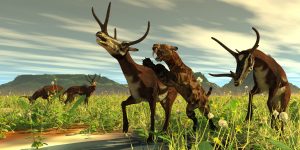Definition
noun, plural: nectophores
The swimming bell in (the colony of) siphonophores
Supplement
The nectophores are the swimming bells in siphonophores. Siphonophores are marine invertebrates that occur in colonies. A single colony is made up of zooids. Each of the zooids in the colony is specialized for a particular function. Thus, each of them is interdependent to one another and would not be able to survive in solitary. The siphonophores may be classified into three groups based on the composition of their colony: (1) cystonects, (2) physonects, and (3) calycophorans. The cystonects form a colony comprised of pneumatophore and siphosome zooids. The physonects’ colony is comprised of pneumatophore, siphosome, and nectosome zooids. The calycophoran colony lacks the pneumatophore and comprised of nectosome and siphosome zooids.1 The nectosome is the region in the colony that is comprised of the nectophores. Nectophores are also called the swimming bells of siphonophores. As the name implies, they are bell-shaped zooids specialized for swimming. They are the medusae that move the colony through the water. These nectophore zooids contract in a coordinated fashion, propelling the colony forward, backward, or in turns.1
In physonects, the nectophores are found below the pneumatophore. In calycophorans, they are just above the siphosome.1
Synonym(s):
- nectocalyx
- swimming bell
See also:
Reference(s):
1Siphonophores. Siphonophores.org. Retrieved from ://www.siphonophores.org.







